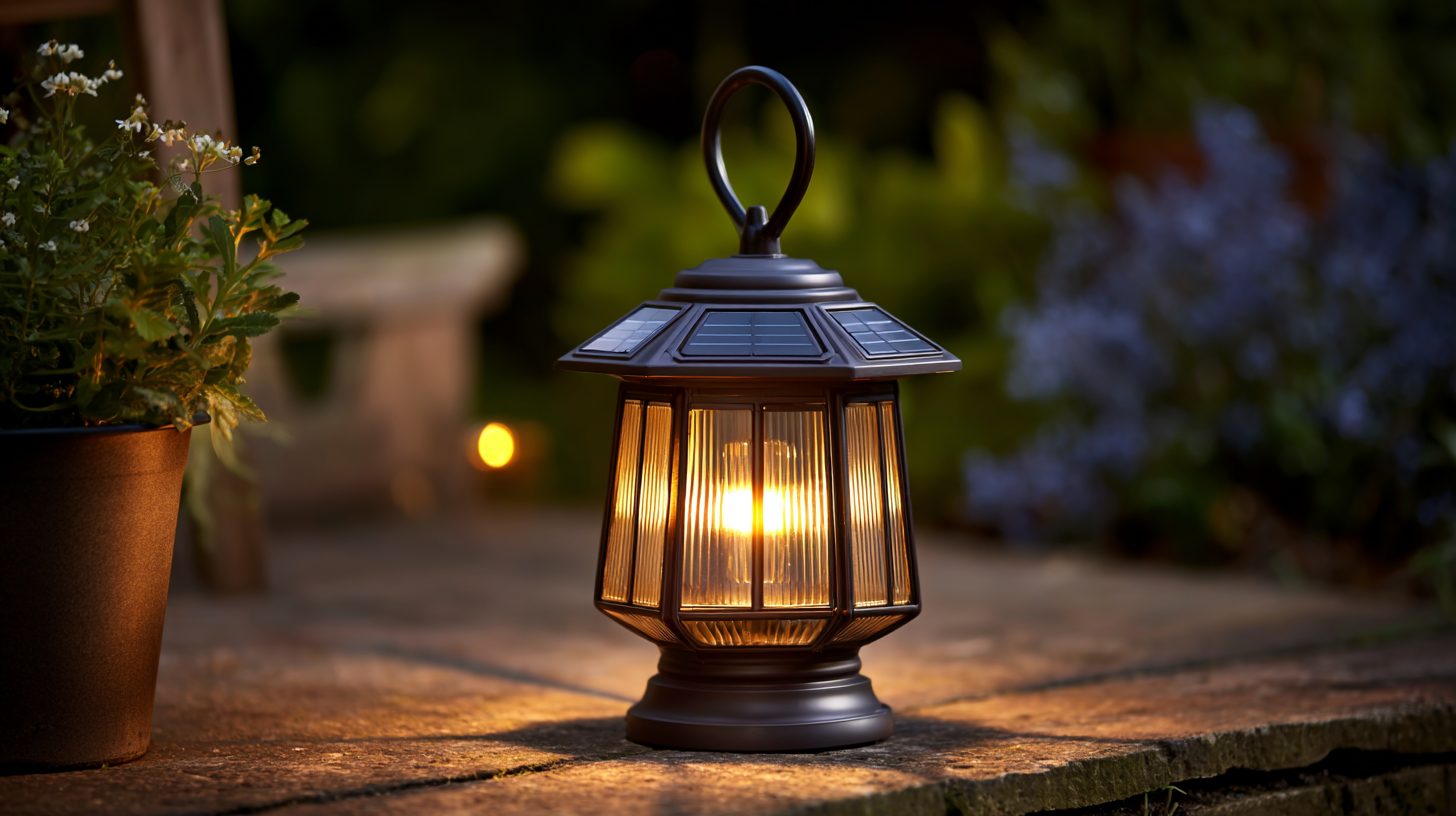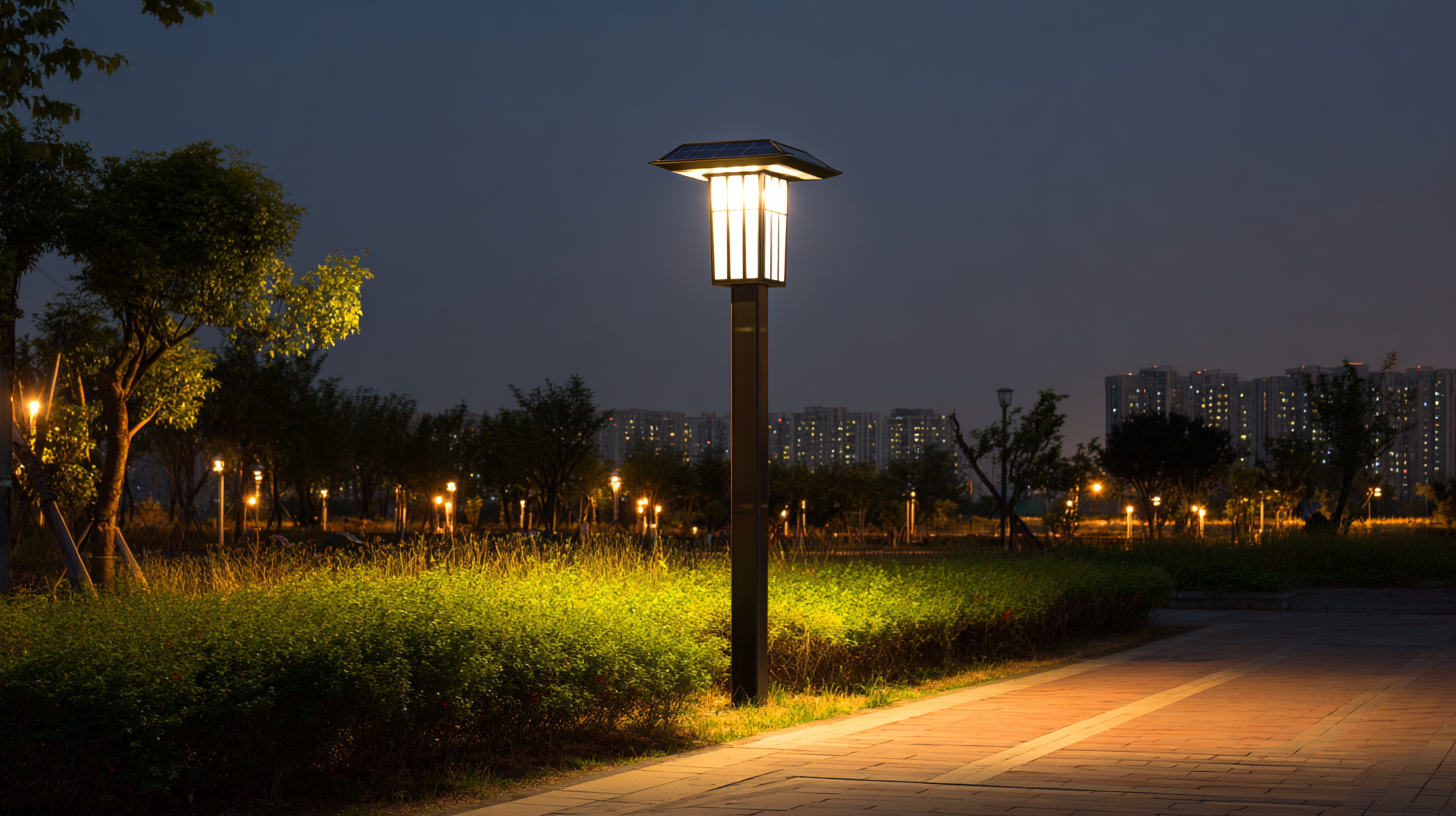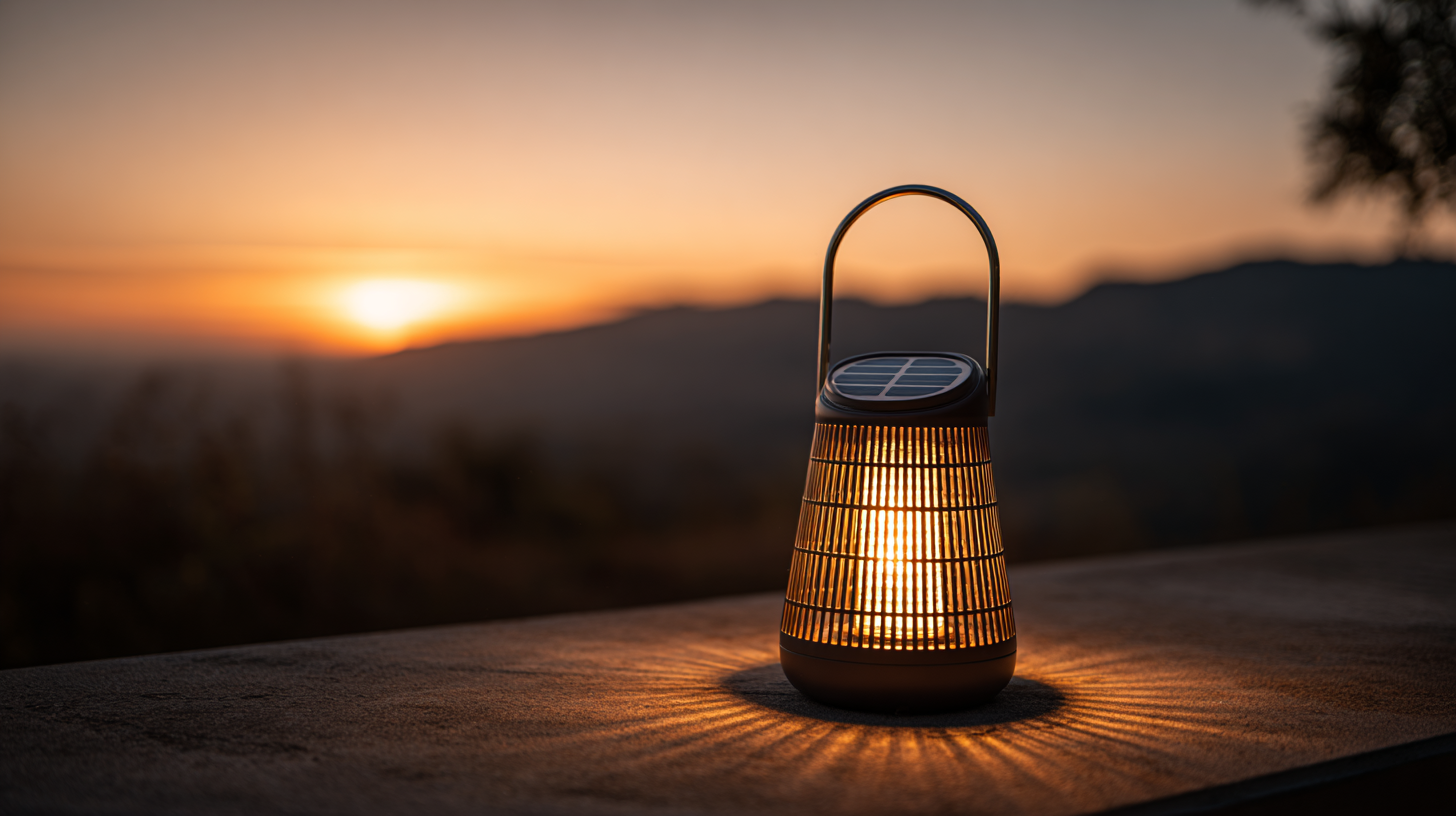Top Strategies for Sourcing the Best Solar Lamp Outdoor Solutions
As the global demand for renewable energy solutions continues to rise, the outdoor lighting sector, particularly Solar Lamp Outdoor products, has seen significant growth. According to a report by Grand View Research, the solar lighting market is projected to reach USD 10.3 billion by 2027, reflecting a compound annual growth rate (CAGR) of 16.5% from 2020. This surge is driven by the increasing awareness of environmental sustainability and the necessity for energy-efficient products. Businesses and consumers are recognizing that solar lamps not only offer cost savings on electricity but also contribute to reducing carbon footprints. Consequently, sourcing the best Solar Lamp Outdoor solutions has become crucial for maximizing efficiency and performance. In this blog, we will explore key strategies to help you navigate the plethora of options available in the market, ensuring you make informed and sustainable lighting choices for your outdoor spaces.

Key Factors to Consider When Choosing Solar Lamps for Outdoor Use
When selecting solar lamps for outdoor use, it’s crucial to consider several key factors that ensure optimal performance and longevity. First, the lumens output is an essential specification. According to the U.S. Department of Energy, effective outdoor solar lamps should provide at least 100 lumens for areas that require adequate lighting, such as pathways and driveways. Proper brightness not only enhances safety but also improves aesthetics in outdoor spaces.
Another critical aspect is the solar panel quality. A recent study by the National Renewable Energy Laboratory indicates that solar panels with higher efficiency ratings, specifically above 20%, can significantly increase the charging capability even in low-light conditions. Additionally, look for solar lamps with durable materials that are weather-resistant, such as aluminum or reinforced plastic, which can withstand harsh environmental conditions—ensuring that your investment lasts long-term. By focusing on these factors, consumers can make informed decisions that align with their outdoor lighting needs while contributing to energy efficiency and sustainability.
Evaluating Solar Lamp Brightness: Lumens and Lighting Performance
When selecting outdoor solar lamps, understanding brightness and lighting performance is crucial. Lumens measure the total light output from a lamp; hence, a higher lumen rating typically means brighter illumination. For outdoor settings, you should look for solar lamps with at least 100 lumens for pathways and 300 lumens for larger areas like gardens or patios. Keep in mind the intended use—whether for mood lighting or security—as this will dictate the brightness required.
To ensure you choose the best solar lamp, consider testing different models in real-world conditions. It's advisable to read reviews and evaluation reports where various solar lights have been assessed for their lighting performance. Pay attention to features like motion sensors or adjustable brightness settings, which can enhance functionality and efficiency.
Lastly, remember to assess the placement of your solar lamps. Installing them in areas with direct sunlight during the day will maximize their charging efficiency, resulting in better lighting performance during the night. Choosing the right solar lamp not only enriches your outdoor space but also offers energy-efficient illumination.
Understanding Solar Panel Efficiency: A Guide to Selecting Quality Products
When selecting quality solar lamps for outdoor use, understanding solar panel efficiency is crucial. Solar panel efficiency refers to the percentage of sunlight that can be converted into usable electricity. The higher the efficiency, the more energy the solar panel can generate, which leads to better performance of the outdoor lamp. Typically, solar panels range from 15% to 22% efficiency, with premium products often offering the best results. For consumers, this means investing in products from reputable brands that prioritize high-quality materials and cutting-edge technology.
Additionally, the placement of solar lamps plays a significant role in the performance of these devices. Optimal placement ensures that the panels receive direct sunlight for prolonged periods, maximizing energy absorption. When sourcing outdoor solar solutions, look for lamps with adjustable solar panels, allowing for better positioning based on seasonal changes and garden layouts. Furthermore, consider models that come with energy storage capabilities, such as lithium batteries, which can store excess power for use during cloudy days or at night. This combination of quality materials and strategic installation will guarantee efficient and effective outdoor lighting solutions.
Battery Capacity Insights: How to Ensure Longevity in Solar Lamps
When selecting solar lamps for outdoor use, understanding battery capacity is crucial for ensuring longevity and optimal performance. The global solar generator market is on the rise, projected to grow significantly from $632.74 million in 2025 to $1,018.29 million by 2030. This growth highlights a burgeoning interest in sustainable outdoor lighting solutions. Battery capacity, measured in ampere-hours (Ah), directly impacts the duration and reliability of solar lamps. Higher capacity batteries can store more energy, allowing lamps to function efficiently for longer periods, particularly during overcast conditions.
It is vital to consider both the quality of battery technology and the solar panel's efficiency. Reports indicate that lithium-ion batteries are increasingly favored for their longer lifespan and faster charging capabilities compared to traditional lead-acid options. Additionally, optimizing solar panel efficiency can enhance battery charging, ensuring that the lamps maintain performance during extended use. Thus, integrating high-capacity batteries with advanced solar technology is essential for maximizing the functionality of outdoor solar lighting solutions, ultimately making them a wise investment for consumers seeking sustainability.

Material Durability: The Importance of Weather Resistance in Solar Lamp Selection
When selecting solar lamps for outdoor use, material durability should be a top priority, especially regarding weather resistance. Outdoor environments can be harsh, with fluctuating temperatures, rain, snow, and high humidity levels. Choosing solar lamps made from high-quality materials such as ABS plastic or aluminum can significantly enhance their lifespan and performance. These materials are typically more resistant to UV rays and corrosion, ensuring that your solar lights remain functional and visually appealing for years to come.

Tip: Always look for solar lamps with an IP (Ingress Protection) rating. A higher IP rating indicates better protection against dust and moisture, making the lamps more suitable for outdoor conditions. For instance, an IP65 rating means the lamp is protected against water jets from any direction.
Another crucial aspect is the choice of solar panel and battery quality, as these components must withstand temperature changes and prolonged exposure to sunlight or rain. Solar lamps that incorporate tempered glass and have weatherproof seals will be better equipped to handle outdoor elements.
Tip: Consider models with a warranty or manufacturer's guarantee, which often indicates confidence in the product's durability. A good warranty can provide peace of mind, ensuring that you are making a sound investment in your outdoor lighting solutions.
